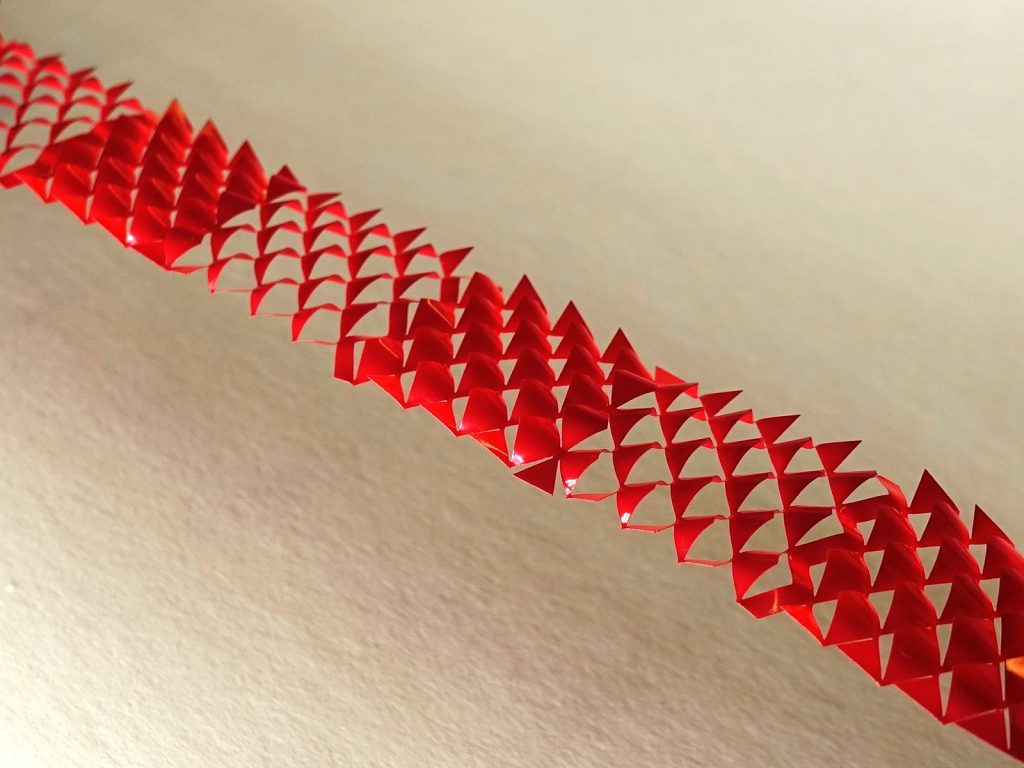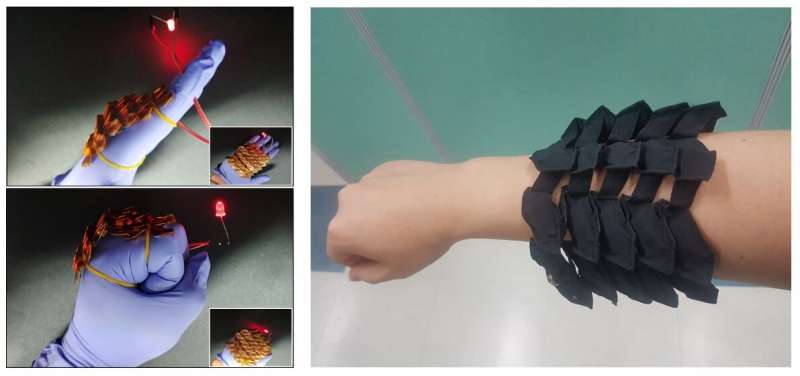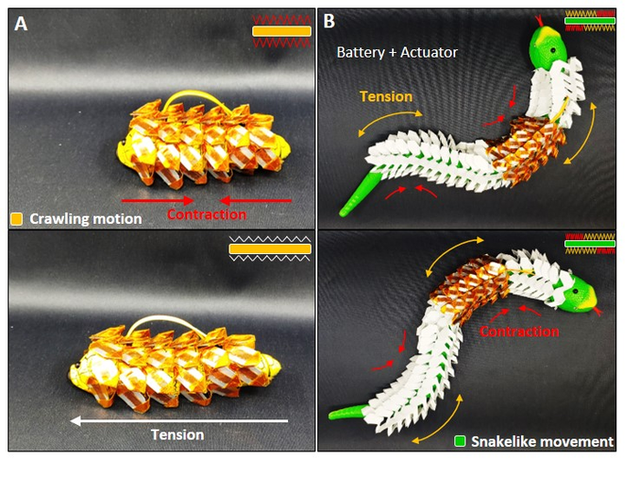A group of researchers created a flexible and stretchable battery that can bend in a zigzag pattern, similar to a snake, according to a new study published in the journal Soft Robotics.
The technology was developed by the Korea Institute of Machinery and Materials (KIMM) team, led by Senior Researcher Bonkyun Jang, in association with Seungmin Hyun of the Department of Nano-Mechanics.
The new battery might be employed in various situations, including disasters and crises, as well as an upgrade to energy storage technology. It can also be equipped with a variety of devices, from regular gadgets to soft robotics. Snake scales substantially influenced the safety and stretchability of the stretchy battery developed by the team.

The ability of each snake scale to fold into the next protects the entire species against external dangers or collisions. Their structural features, most importantly, allow them to stretch and adapt to their surroundings in a highly stretchy and flexible manner. This was excellent news for the KIMM research team, which was working to improve the design of a stretchable battery without losing stability or performance. This was achieved by utilizing a mechanical meta-structure that resembles a snake’s scale. In addition, the new technology allows for flexible mobility — stacking numerous small, hard batteries to form a scale-like structure — defying wearable device tradition (where the frame and the battery are co-extensive in a tight formation).

The KIMM team also attempted to ensure the battery’s safety by controlling deformation in the battery’s materials and employing a customized shape for each battery cell, which delivered high capacity per unit size. The new battery cell’s layout and connecting components were inspired by snake scales, with small hexagonal shapes that combined to create a flexible framework that facilitated both fold and unfold procedures.

This concept is simple enough that mass production will be a viable alternative as technology advances. Furthermore, creating these snake-like battery cell devices at scale would be equivalent to industrial origami because the battery could be forged in a manufacturing process by cutting and folding flexible electrodes.

From human-wearable soft robots to energy storage devices, the new technology has various applications. For example, the new battery cell design could be helpful in medical devices that aid in the rehabilitation of patients who need help. Moreover, the new robotic equipment might be utilized as a scout or assistance during rescue missions in a disaster. Consider a snake-like robot exploring the ruins of a collapsed building, slithering and curling its way past rocks and shattered glass to verify the location of a trapped victim, perhaps saving hours or days in recovery time.


